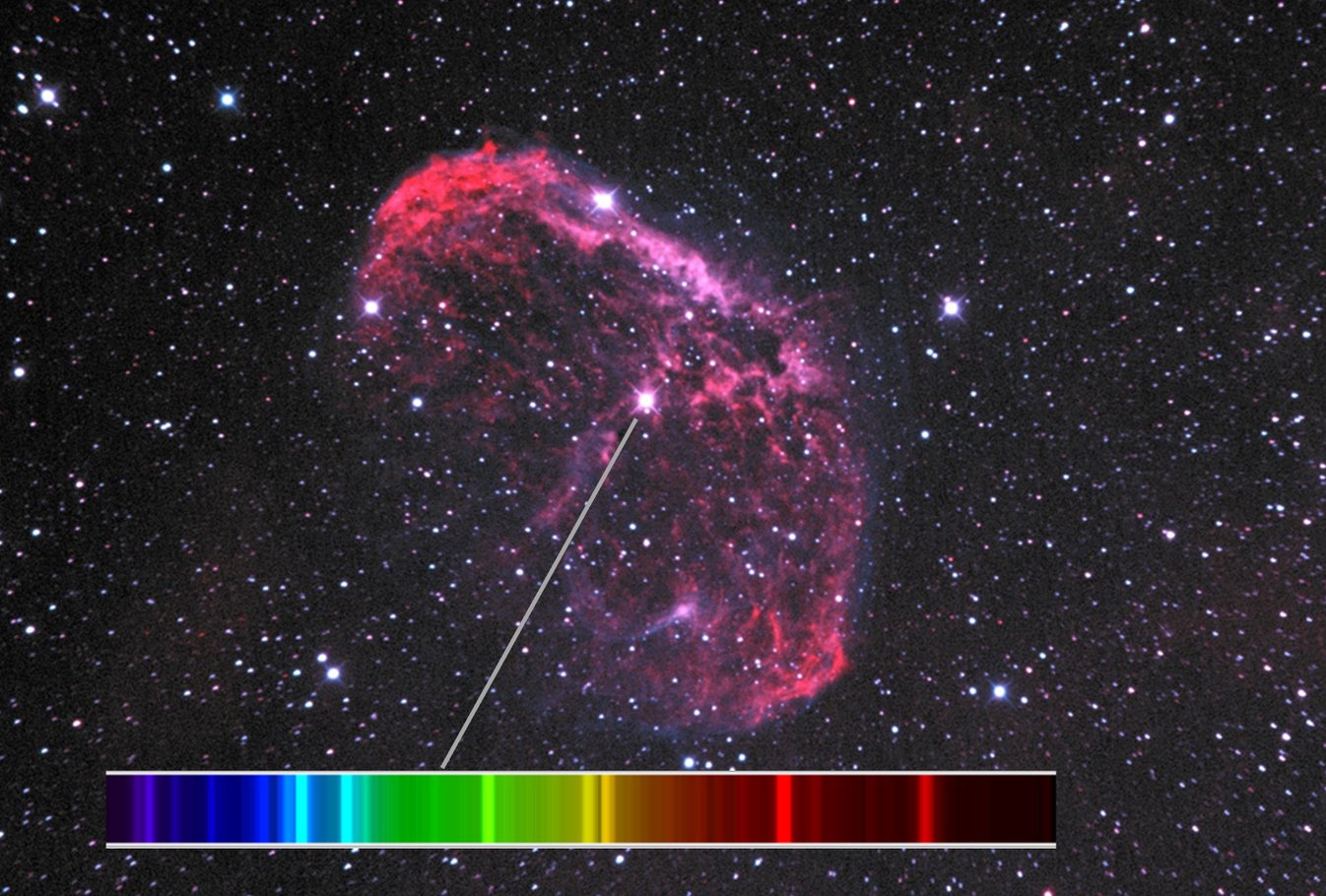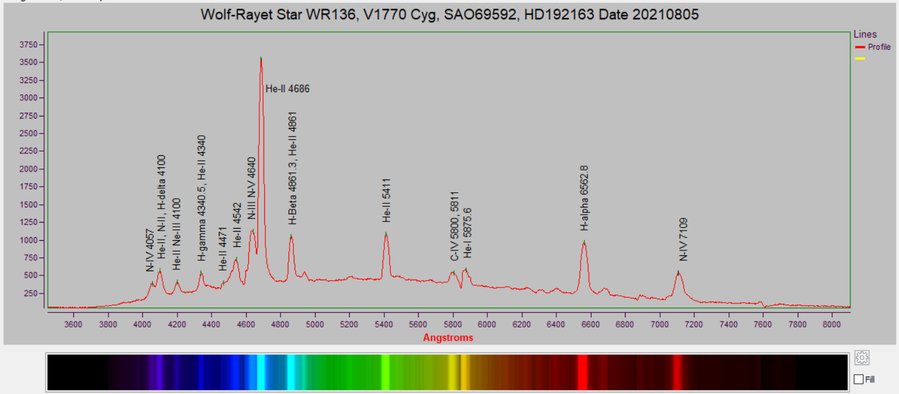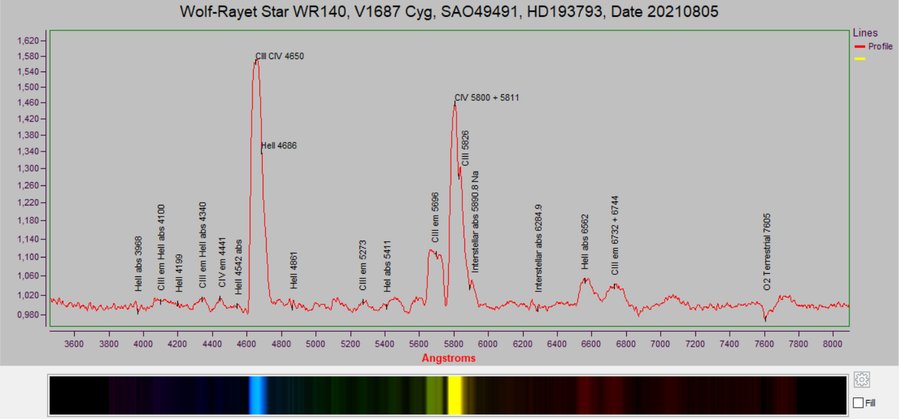Galaxies for Fun Astronomical CCD photos on peculiar galaxies and other astronomical stuff.
www.galaxies.se - by Ivar Hamberg
WR136 alias V1770 Cyg:
The Wolf-Rayet star WR136 is in the very centre of NGC6888, the Crescent nebula. It is a very hot star at the late phase of its life.
The spectrum is dominated by the He/N doublet at 4640-86 Å. The He and N-type dominated spectrum defines the star as type WN6. One can note that helium and hydrogen lines can have the same characteristic wavelength making line identification a bit more complex, as stated in this link:
https://www.astrogeo.va.it/astronom/spettri/stelle-wren.htm
"Due to the high temperature of these stars, ionized helium lines are always observed together with carbon and nitrogen. Ionized helium lines appear at the same position [as] hydrogen lines divided by four, due to the +2 charge in the He+ nucleus.
As an example, lines that seems due to hydrogen balmer lines in WR spectra, are infact due to Brackett series (n1=4 and n2= 6, 7, 8, 9) of He+. He+ can be distinguished from hydrogen from the 4685 Å line that belongs to the Paschen series (n1=3, n2=4) and do not overlap any existing hydrogen wavelength."
SPECTRUM: 60 sec exposure with a spectrograph utilising a 300 L/mm grating and a 12" RC telescope.
DEEP SKY IMAGE: 55 min H-alpha, 65 min OIII. Taken under somewhat mediocre sky conditions.
WR140 alias V1687 Cyg:
This Wolf-Rayet star is of type WC7, showing a carbon rich spectrum. The object is probably a binary star with one Wolf-Rayet component and one O-type star. Hence the spectrum is a mix from two stars. The spectrum has both emission lines and absorption lines.
Interesting to note is that there are a few lines probably attributed to interstellar clouds. E.g. the Na line at 5890 Å.
SPECTRUM: 60 sec exposure with spectrograph and 300L/mm. 12" RC telescope.
V1042 Cyg:
This Wolf-Rayet star is of type WC8, with a spectrum dominated by carbon bands.
SPECTRUM: 2x60 sec exposure with spectrograph and 600 L/mm grating. 12" RC telescope.



